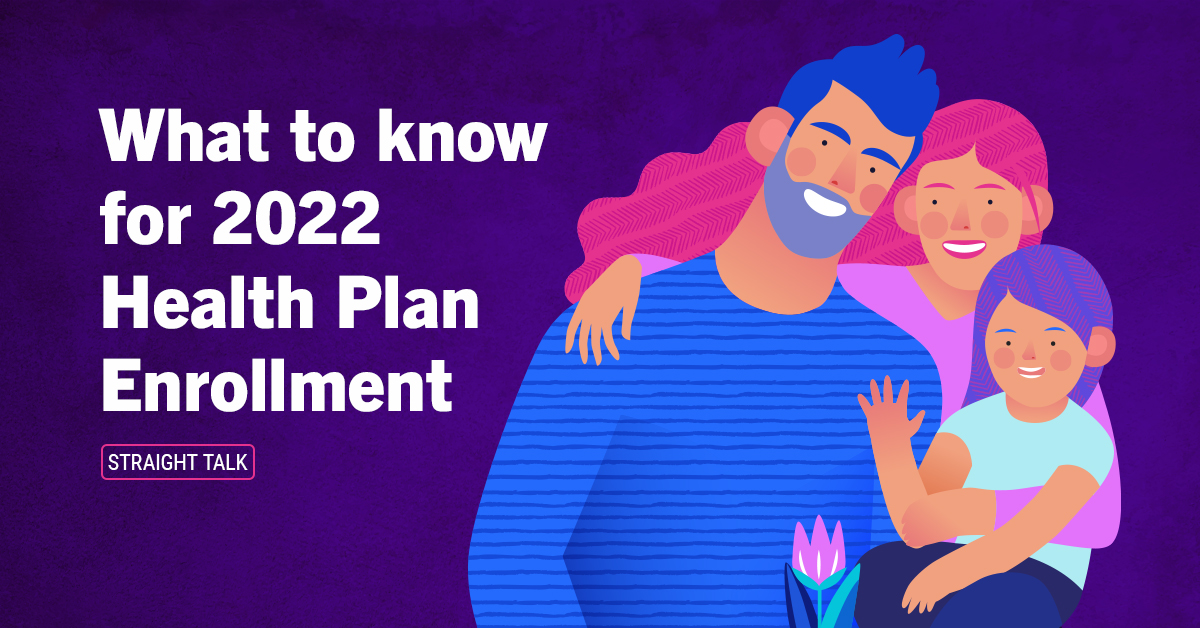It is the busiest time of year in the health insurance world. And it might be time to review or change your coverage.
Most employers hold an annual open enrollment and benefit selection period for their employees in the fourth quarter of the year. Today, around 40% of us in Louisiana have health insurance because we have a job or are related to someone who has a job.
Medicare’s Annual Enrollment Period (AEP) starts today, Oct. 15 and runs through Dec. 7. About 15% of us are on Medicare. That’s health insurance that can be provided by the federal government directly, or through private insurance companies that offer Medicare plans.
The Healthcare.Gov Open Enrollment Period starts Nov. 1 and ends Jan. 15, 2022. About 2% of Louisianians get healthcare coverage this way. As we’ve talked about recently, new federal rules that took effect earlier this year make many more people eligible for financial assistance to pay for healthcare.gov plans.
Another 35% of us are on Medicaid, a health insurance partnership between the federal government, the state government, and private insurance companies called Managed Care Organizations. Open enrollment for Medicaid plans (yes, you have options on Medicaid) starts today, Oct. 15, and ends Nov. 30.
I’ll put this information into a handy chart for you.
| Origin of Plan | Who Gets It | When is enrollment |
| Employer-based | People who have or are related to someone with a job | Varies, but usually in the fourth quarter. Check with your HR department. |
| Medicare | Most people over age 65 and a few others with certain disabilities | Oct. 15 – Dec. 7 |
| Healthcare.gov/Individual plans | People under 65 who don’t get employer-based health insurance and don’t qualify for Medicaid | Nov. 1, 2021 – Jan. 15, 2022 |
| Medicaid | There are many routes to qualify for Medicaid; it is mostly for very low-income people | Oct. 15 – Nov. 30 |
Three Things You Need to Consider
In my opinion, the three biggest things to consider, no matter the origin of the plan you are looking for, are:
- Doctors – Make sure the doctors and healthcare providers you regularly see for care are IN YOUR NETWORK.
- Hospitals – Same as doctors. Make sure your preferred hospital is in the network you choose.
- Drugs – Make sure the drugs you take are covered on the plan you choose.
This might require doing a little research. You can use our website to do this. Employer and individual plans can find their provider directory here. The provider directory for Medicare Advantage is here. You can find out if your prescription is on our list of covered drugs here.
PPO, POS, HMO, HSA, Select Network???
For employer and individual plans, Blue Cross has lots of options. Employers may or may not offer all of these plans, but the list below will quickly define them so you know what you are looking at when you see your options.
To learn more about these options (and dental, travel and cancer coverage) in one place, visit our website. We’ve made product information for 2022 group health plans available to groups. If you get insurance through your employer, check with your HR team. For individuals, information for 2022 individual health plans will be available on Nov. 1 when open enrollment begins.
Select networks – Blue Cross offers several select networks with the largest providers in the regions where they are available. They can be a great way to save money on health insurance and all of them have complete, robust networks. But I’ve heard stories of people who picked a select network plan based on what the premium cost only to find out that they chose a network that didn’t include their preferred providers. This is why it’s important to make sure the doctors and hospitals you use most are in the network before choosing any plan.
Our select networks are Blue Connect, Community Blue, Precision Blue and Signature Blue. In these videos, providers from our select networks across Louisiana explain why the value of a select network doesn’t mean sacrificing care.
HMO – Our HMO plans have statewide networks that are larger than our select networks. but no out-of-network benefits (except for emergencies). Today, we only sell these to large groups, so some of you may not have this option. If you do, you’ll see it in the information you get from your HR department. HMO and POS plans use the same network.
POS – Our Point of Service (POS) plans are available statewide and have larger networks than our select networks, but with higher premiums. POS plans have in- and out-of-network benefits. These plans are available to groups and individuals. Our POS plan is called Blue Point of Service.
PPO – These plans have our largest networks and include providers from around the state and country. But that access comes with higher premiums. Two of our PPO plans are called Blue Max and BlueSaver.
HSA – This is a health savings account. It’s not a health plan, but it can help you save money on eligible health expenses. It is a dedicated account you can use to save money for healthcare costs, usually with tax benefits. Some employers will provide funds for it. Many of our BlueSaver plans can be paired with an HSA.
Premium v. Out-of-Pocket Costs
When you evaluate your plan options, be sure to look at your premium cost versus your out-of-pocket costs. Premium is the amount you pay each month for coverage, whether you use any healthcare or not. Out-of-pocket costs depend on how much healthcare you use. Some plans have lower premiums but higher out-of-pocket costs and some have higher premiums, but lower out-of-pocket costs. This will require looking into the future at how much medical care you expect to need in the next year. But if you know you go to the doctor regularly, have several recurring prescriptions, or even simply have a larger family, you may know that you plan to use more healthcare.
A, B, C, D, Medicare Advantage, Medicare Supplement?
I covered all the parts of Medicare just a couple of weeks ago, so take a look at that rundown here. You have to sign up for parts A and B with the government and you don’t have choices.
But Part C, also called Medicare Advantage, is where it gets interesting. Blue Cross offers Medicare Advantage (MA) plans, which provide comprehensive, wrap-around coverage. Our Medicare Advantage plans are called Blue Advantage and we offer HMO and PPO versions.
We also have two supplemental plans – BlueChoice 65 and BlueChoice 65 Select. Note that you cannot be enrolled in both Medicare Advantage and Medicare Supplement at the same time.
Medicare Made Easy
If you need more information about Medicare, join us on Facebook on Oct. 26 or Nov. 16 at 10 a.m. I’ll be chatting with our experts. You can ask questions right in the chat, and we’ll answer as many as we can at that time. You can watch the recordings later on our YouTube channel.
Get More Help
Anyone who needs to select a Medicare or Individual/Healthcare.gov plan for 2022 can call a licensed Blue Cross agent who will, FOR FREE, talk you through your options and help you get the best plan for you.
- For Medicare plans – 1-800-568-1417
- For Individual/Healthcare.gov plans – 1-844-GET-BLUE (1-844-438-2583)
If you get coverage through your job, look for information from your HR department about any changes or if there are additional options you may want to consider. It’s not unusual for employers to change plans, so you want to be sure you know about that ahead of time.
Straight Talk is, for most of us, it’s time to start making decisions about our healthcare for the next year. Do your research and reach out for help if you need it.
Oh, and if you did the math at the very top of this post, you may have noticed the percentages of who gets their healthcare where don’t add up. That’s because there are 7-8% of us on any given day who are completely uninsured. If you know someone who fits that bill, please encourage them to go to healthcare.gov to see what is available to them. They may be able to get coverage for less than they think.





Leave a Reply